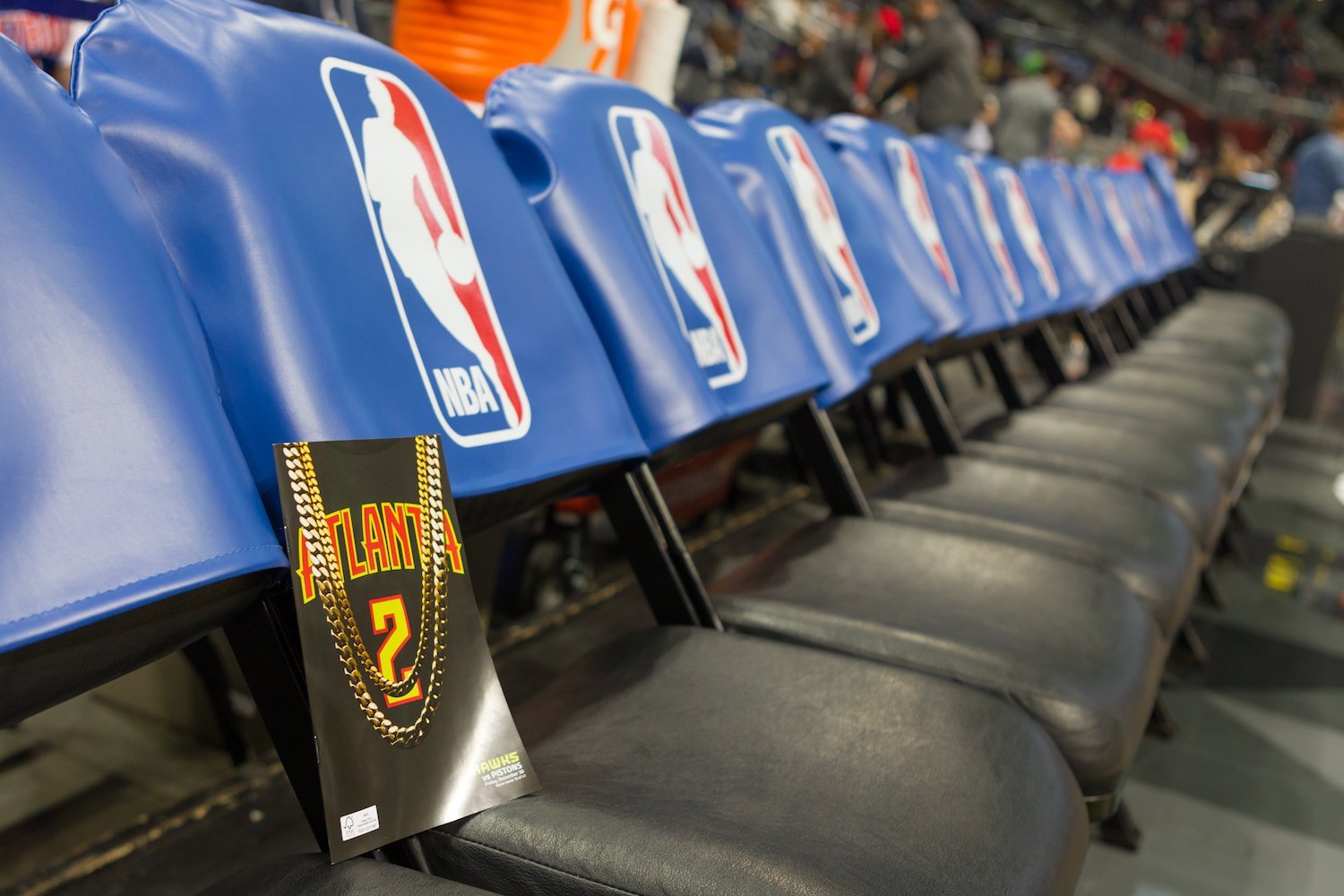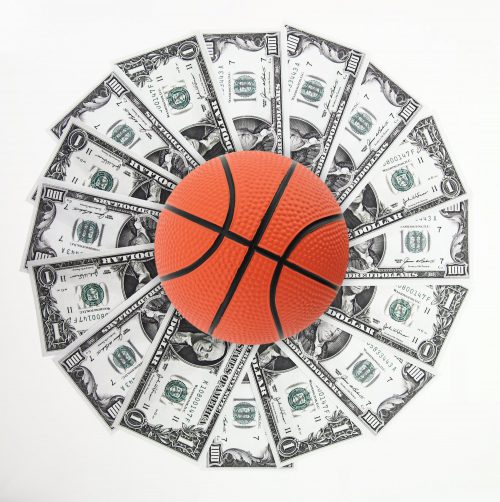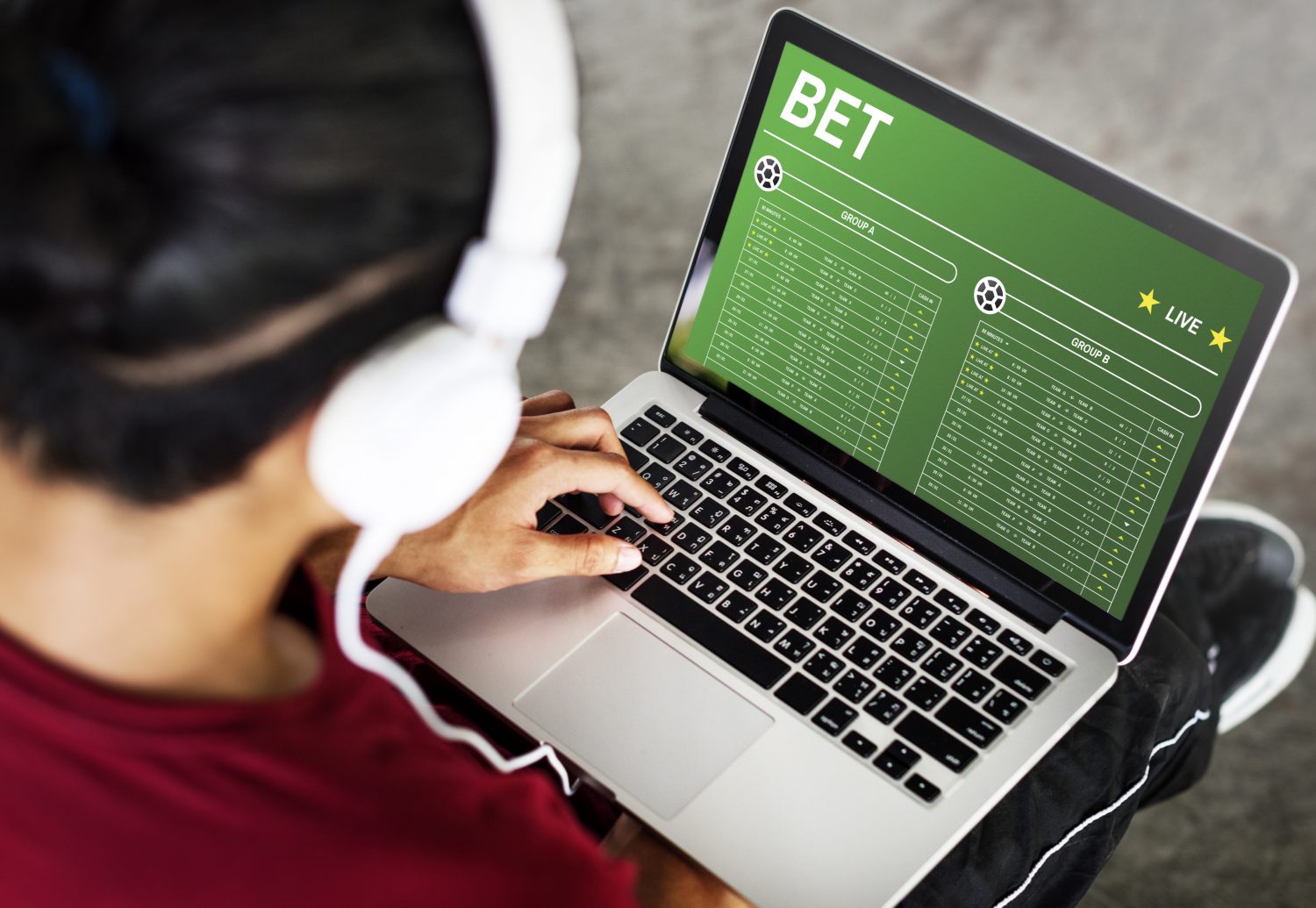A Brief Overview of the NBA Betting Landscape

In 2014, NBA Commissioner Adam Silver published an op-ed in the New York Times, discussing how gambling should be legalized and regulated across America as it is in Nevada. In the piece, he mentioned an eye-popping statistic—that gamblers in the US wager up to $400 Billion illegally each year. While it is unclear where he got that number, it is safe to say he isn’t wrong in the assertion that betting should be legalized. Regardless of the exact stat, we know gambling is a multi-billion dollar industry. We also know the action isn’t limited to the United States alone.
Increasingly, sports betting is becoming a global phenomenon. Among the most bet-upon sports is NBA basketball. As the league becomes increasingly globalized, it has also begun to attract greater interest from international audiences, including willing sports bettors. In order to understand the scope of the NBA’s growing popularity, let’s consider a report published in June 2016, which stated that Game 7 of the 2016 NBA Finals was the most bet-upon game in NBA history, followed closely by Game 6. Bill Sattler, director of specialty games for Caesars Palace, said he’d never seen anything like it in his 29 years in the industry. At William Hill’s Nevada Sportsbook,
Game 7 accounted for 28% of the total money waged during the entire NBA Finals.
The MGM Sportsbooks saw upwards of a million dollars waged on Game 7—a mere three hours prior to tipoff. At Westgate, the money bet on Game 7 broke records for its own Superbook. Among those bets were multiple six-figure wagers.
Aside from the Finals, the NBA also offers bettors 82 regular season games to bet on. That’s a lot of opportunities to expand your bankroll. But in order to do so, you’ve got to learn the ins and outs of betting on the NBA. Similar to our previous “how-to” articles, we’d like to offer you some pointers on improving your returns, and what it takes to go from square to sharp. We’ll also discuss the different types of bets you can make on NBA games.

Betting on the NBA
The Spread Bet
You’re probably familiar with spread betting. It is after all the most common type of sports wager. In the simplest terms, a spread serves as an equalizer between the favorite and the underdog. In sportsbooks, it’s expressed like this:
| Teams | Spread | Moneyline | Final Score |
| Cavaliers | +7 | -110 | 105 |
| Warriors | -7 | -120 | 112 |
The point of this is to encourage bettors, like those on 얀카지노, to bet evenly on the favorite and the underdog. So let’s say you bet on the Cavs to cover the spread. That means the Cavs must either lose by less than seven points or win. That is, you’re not just betting that the Cavs will win—you’re betting that they’ll cover the spread. The moneyline indicates that if the Cavs (the underdogs) cover the spread and you waged $110, you’ll yield a $100 profit. The moneyline is often also referred to as ‘the Juice’ or ‘vig.’ It is essentially a fee the bookmakers charge so you can actually place a bet.
Which brings us to…
The Moneyline Bet
Moneyline betting is pretty straightforward. Without a spread, it is simply a bet on who will win a given game. In the NBA, given the potential for mismatches, moneylines tend to fluctuate. For example, here’s a look at two different moneyline odds for the week of October 23, 2017 in the NBA:
10/24 7:05 PM
Brooklyn +160
Orlando -185
10/24 7:05 PM
Chicago +1000
Cleveland -1500
For Orlando and Brooklyn, the lines are lower because the teams are fairly well matched. For Cleveland and Chicago, the odds are rather lopsided—reflecting an evident mismatch. In the latter case, the Cavaliers are considered heavy favorites to win. The ‘-1500’ means a bettor must wage $1500 in order to score a $100 payout—while the ‘+1000’ means a $100 bet on the Bulls—the underdog—pays out $1000.
To be clear, you are not required to bet $1500 on the Cavs or $100 on the Bulls in order to earn a payout. You can bet any amount that suits you whether it’s $5 or $5000.

The Totals Bet
While sportsbooks tell us that most NBA betting action comes in the form of moneyline and spread bets, we know there is success to be had with totals betting. If you are not placing wagers on the “over/under” as part of your overall NBA betting strategy, you’re ignoring a great opportunity to build your bankroll.
Also known as over/under, totals betting involves placing a wager on the total number of points scored by both teams combined in a game. The odds will be set at a number that predicts the total points scored, often hovering somewhere between 200 and 250. As the NBA is the highest scoring sport of all major American sports, it is not uncommon to see totals eclipsing 220—especially for matchups with a lot of offensive firepower. Over/unders may also be available for each quarter or half of a game, depending on the book.
Let’s return to our Chicago/Cleveland matchup. Here are the opening totals odds for that game:
Chicago 207½o -110
Cleveland 207½u -110
In this case, bookmakers have the score falling at 207.5 with the juice set at -110 for both teams. As a bettor, you would then predict whether the final point total will fall over or under 207.5 and make your bet from there.
For totals betting, the juice plays out a bit differently than spread betting. That is, if you bet the over and win, a bet of $110 pays out $100—whereas if you bet the under, a bet of $100 pays out $110.
Notice the total set at 207.5. Obviously, you can’t score half a point in the NBA. The decimal number is to avoid a potential push (or tie). Depending on the book you place your bet with, the O/U may vary. Not to mention, lines will fluctuate from opening to game time. So you’ll want to keep an eye on the numbers as games approach.
First Quarter/First Half Bets
NBA games, as you likely know, are broken up into four 12-minute quarters. For the bettors who aren’t satisfied by simple spread or moneyline bets, first quarter and first half lines offer fractioned spreads (usually a fourth of the total spread). These lines let bettors decide who they think will cover the spread at the end of the first quarter and first half.
Keep in mind that research for this type of bet will look different than for full game betting. Teams may come out the gate firing on all cylinders then lose steam as the game goes on—especially if they lack depth on the bench. Often, starters play the majority of, if not the entire, first quarter; so betting on higher scoring teams like the Warriors (especially late in the season) is a good way to ensure success in this type of bet. As usual though, you’ll want to look at first half scoring trends for teams, injury updates, etc. This isn’t live betting so taking the time to crunch the necessary numbers will help you tailor your bets to each game.
Halftime Lines
These lines differ from first half lines in that they are only available at halftime. That means being vigilant and timely in placing bets at this juncture of a game. Halftime lines will reflect the first half action, taking into account each team’s performance to create a whole new spread for the rest of the game. The new spread essentially resets the game score to 0-0. While this type of bet is less popular than regular spread betting or moneylines, it’s simply another chance to turn a profit—especially since the payout stays the same.

The Parlay/Teaser Bet
With a parlay bet, you can rubberband your bets together to increase your potential payout. In order to win, each bet has to cover. Spread bets, totals, and moneylines can all be combined. Some Sportsbooks offer you the opportunity to include 1st quarter and half time bets. Furthermore, parlays are not limited to individual sports. For example, October’s a particularly ripe time for some exciting parlays with the MLB playoffs in full swing, the NFL season nearly halfway complete, and the NBA season kicking off.
In case of your bets pushes (ties), the bet will essentially disappear from the parlay. So a parlay of five bets in which one pushes will yield a four-bet payout. Don’t forget to check with each Sportsbook’s respective rules regarding parlays as they tend to vary.
A teaser bet is the same as a parlay, except the bookmakers give you points to increase your chances of winning. The downside is a reduced payout. So, let’s say a Sportsbooks gives you four points to tease the betting lines. The teaser, listed as -4, would apply to each bet within the parlay. So if one of your bets is a spread bet on the Cavs, and the Cavs started with a spread of -7, the teaser would reduce the spread to -3.
The Futures Bet
A futures bet is, as you might guess, a prop bet placed on future outcomes. These outcomes can range from who will win the NBA championship to who will win specific conferences, to which player will take home the MVP trophy. Futures are not limited to teams, but can be applied to players, point totals, win totals, and more. As the season goes on, future odds change depending on the team. By the end of March, it’s not uncommon to see bookmakers drop more than a few teams from the odds list altogether.
That about summarizes the different bets you can make for NBA betting. Now let’s look at some different stats to consider when placing these bets.
NBA Betting Stats
Here’s a hot tip: the majority of seemingly significant NBA statistics are regularly overlooked by sharps. Why? Because context is everything in the NBA. For this reason, handicappers tend to focus their attention on situational circumstances rather than, say, points per game, or points allowed. When they do look at stats, it’s usually the more obscure, but nonetheless significant, ones they’re looking at. Here are a just a few of those stats you’ll want to consider when capping games for yourself.
Effective field goal percentage
Effective Field Goal Percentage, or eFG%, is calculated the following way: (2pt FGM + 1.5*3pt FGM) / FGA. This means a made three-pointer is worth one and a half times as much as a made two-pointer. A player who shoots 4 for 10 on all two-point baskets has a standard FG% of 40% and an eFG% of 40%.
In a real game of basketball, what matters is points scored per possession. A player whose eFG% is 60% is scoring at a rate equal to shooting 60% on two-point field goal attempts, a very respectable number.
It should come as no surprise that the league’s top teams regularly rank among the highest in eFG%. In 2016, Golden State had an eFG% of 56.4 followed by Cleveland with 55.3.
The point of this statistic is to give you an idea of each team’s overall success from the field. If a team has a high eFG% while holding their opponents to a low eFG, they’re likely to win the majority of their games. Likewise, you’re likely to win a majority of your bets if you pay attention to this important stat.

Turnover percentage/Assist-to-turnover ratio
This is a big one for bettors. If a team is turnover-prone, you can’t expect them to cover a spread. As such, it’s important to keep an eye on each team’s turnover percentage and assist-to-turnover ratio before placing any wager.
As of October 30, the teams with the strongest assist-to-turnover ratio are the Washington Wizards (4-2), the Toronto Raptors (3-2), Orlando Magic (4-2), Golden State Warriors (4-3), and the Detroit Pistons (5-2). While it’s too early to put too much stock into these numbers, they will become greater indicators of betting success as the season rolls on.
In 2016, the Phoenix Suns ranked as the worst in A/TO with a ratio of 1.31. They finished at the bottom of the Western Conference with a 24-58 record. Meanwhile, Golden State finished the year with a league-leading 2.11 A/TO ratio and a record of 67-15.
So make sure you consult the turnovers column before placing any bets.
Free throw rate/Free throw percentage
Free throws can easily be the difference between a covered spread and a lost bet. How many games, how many bets, have been decided by a single point? More than we can count (at least without concerted research). The point is, free throws matter.
Free throw rate (calculated as free throws attempted divided by field goals attempted) indicates which teams are better at getting to the stripe. The stat shows which teams are the best at drawing fouls, but without a success percentage doesn’t mean very much. For example, a team might get to the line a lot during a game, but if they’re missing the majority of their attempts it’s not necessarily an indicator of success.
Hence why it’s important to factor in free throw percentage as well. Taking into account the various free throw-related statistics will give you an edge in figuring out which teams create and capitalize on attempts at the stripe.
Pace factor/Offensive efficiency
You won’t find this unique stat anywhere but ESPN.com. That’s because it was invented by ESPN’s NBA guru John Hollinger. Totals bettors looking for an advantage on the over/under will want to pay special attention to the pace factor.
Despite its fancy name, pace factor is a simple statistic. That is, it’s used to estimate the number of possessions a team has per game. The more possessions a team accumulates, the quicker the pace of the game. The flip side is that the more possessions a team has, the more their opponent will have too. Factoring offensive efficiency into this equation gives us a clear picture of how much each team is capitalizing on their possessions.
Interestingly, in 2016 the Brooklyn Nets and Phoenix Suns ranked highest in pace factor with 103.6 and 102.9 respectively. They were also the league’s lowest ranked teams. Behind them, with PFs of 102.5 and 102.2, were the Houston Rockets and Golden State Warriors, two of the league’s best teams last season. So what sets the former teams apart from the latter? Offensive efficiency.
Brooklyn’s offensive efficiency rating of 101.9 was the third lowest in the league. While Phoenix fared only slightly better with a rating of 103.9. So although each team kept a pretty fast pace throughout the year, they were unable to capitalize on it as Houston and Golden State did. The Warriors ended the regular season with a league best 113.2 OFF EFF rating. The Rockets finished second with a rating of 111.8.
The end result? The Warriors and Rockets made it deep into the postseason with the Warriors eventually winning it all. Meanwhile, the Suns and Nets earned top picks in the summer lottery. To summarize, keep pace factor and offensive efficiency in mind when figuring out your over/unders. And in general, it’s a good idea to consult the entirety of John Hollinger’s NBA team stats page.
Well, that concludes our guide on betting on the NBA. Now take this knowledge into the world and become the sharp you were meant to be.


